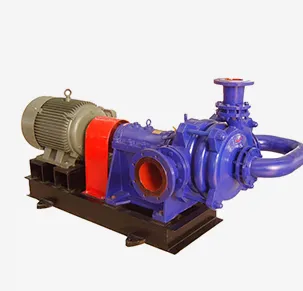English
- Afrikaans
- Albanian
- Amharic
- Arabic
- Armenian
- Azerbaijani
- Basque
- Belarusian
- Bengali
- Bosnian
- Bulgarian
- Catalan
- Cebuano
- Corsican
- Croatian
- Czech
- Danish
- Dutch
- English
- Esperanto
- Estonian
- Finnish
- French
- Frisian
- Galician
- Georgian
- German
- Greek
- Gujarati
- Haitian Creole
- hausa
- hawaiian
- Hebrew
- Hindi
- Miao
- Hungarian
- Icelandic
- igbo
- Indonesian
- irish
- Italian
- Japanese
- Javanese
- Kannada
- kazakh
- Khmer
- Rwandese
- Korean
- Kurdish
- Kyrgyz
- Lao
- Latin
- Latvian
- Lithuanian
- Luxembourgish
- Macedonian
- Malgashi
- Malay
- Malayalam
- Maltese
- Maori
- Marathi
- Mongolian
- Myanmar
- Nepali
- Norwegian
- Norwegian
- Occitan
- Pashto
- Persian
- Polish
- Portuguese
- Punjabi
- Romanian
- Russian
- Samoan
- Scottish Gaelic
- Serbian
- Sesotho
- Shona
- Sindhi
- Sinhala
- Slovak
- Slovenian
- Somali
- Spanish
- Sundanese
- Swahili
- Swedish
- Tagalog
- Tajik
- Tamil
- Tatar
- Telugu
- Thai
- Turkish
- Turkmen
- Ukrainian
- Urdu
- Uighur
- Uzbek
- Vietnamese
- Welsh
- Bantu
- Yiddish
- Yoruba
- Zulu
Telephone: +86 13120555503
Email: frank@cypump.com
Sep . 27, 2024 19:37 Back to list
Submersible Wastewater Pump for Efficient Effluent Management and Drainage Solutions
Understanding Submersible Effluent Pumps A Comprehensive Guide
Submersible effluent pumps are essential devices utilized in various pumping applications involving wastewater and effluent management. Their design allows them to operate submerged in the fluid they are pumping, making them ideal for both residential and commercial settings. This article provides an overview of submersible effluent pumps, their applications, benefits, and maintenance considerations.
What are Submersible Effluent Pumps?
Submersible effluent pumps are designed to operate below the water (or fluid) surface, which sets them apart from other types of pumps that typically work above the fluid level. These pumps are hermetically sealed, preventing water from entering the motor and other critical components. This feature minimizes the risk of electrical hazards and damage, thus enhancing their durability and reliability.
The primary function of an effluent pump is to transport wastewater, including treated effluent from septic systems or other sewage applications, to treatment facilities or dispersion fields. They are engineered to handle relatively low solids content, making them suitable for effluent applications rather than high solids or sewage applications that require heavier-duty pumps.
Applications of Submersible Effluent Pumps
Submersible effluent pumps find a variety of applications across numerous sectors, including
1. Residential Sewage Systems They are commonly employed in residential septic systems to pump treated effluent from the septic tank to drainage fields or mound systems.
2. Commercial Properties In businesses where wastewater disposal is necessary, such as restaurants or laundromats, these pumps can efficiently remove effluent from holding tanks to municipal sewer lines.
3. Industrial Settings Industrial facilities that generate wastewater may use submersible effluent pumps to handle effluent that requires treatment before disposal.
4. Flood Water Management They can also be used for dewatering purposes during flood situations or construction projects where excess groundwater needs to be removed.
Benefits of Submersible Effluent Pumps
There are several advantages to using submersible effluent pumps
submersible effluent pump

1. Efficiency Operating underwater allows these pumps to be highly efficient in terms of energy consumption, often using less energy than comparable above-ground pumps.
2. Space-Saving Because they are submerged, submersible pumps do not require significant above-ground space, making them ideal for installations where space is limited.
3. Minimized Noise Submersible pumps are quieter than traditional pumps since the water dampens the noise, an essential factor in residential areas.
4. Safety With their design eliminating electrical hazards when submerged, these pumps contribute to a safer working environment.
Maintenance of Submersible Effluent Pumps
While submersible effluent pumps are generally durable, regular maintenance is crucial for optimal performance and longevity. Here are some maintenance tips
1. Regular Inspection Periodically inspect the pump for signs of wear or damage. Look for cracks in the housing or degradation of the power cord.
2. Cleaning Keep the inlet screen free of debris that can clog the pump. Regular cleaning ensures that the pump operates efficiently.
3. Check Electrical Connections Ensure that all electrical connections are secure and free from corrosion. Faulty connections can lead to pump failure.
4. Test the Pump Regularly test the pump to ensure it engages and runs smoothly. This can help catch any issues early, preventing costly repairs or emergency pump replacements.
5. Professional Service Every few years, consider having a professional service the pump to check internal components, ensuring they are functioning correctly and efficiently.
Conclusion
Submersible effluent pumps play a vital role in managing wastewater and effluent in both residential and commercial settings. Their efficiency, combined with space-saving designs and safety features, makes them an excellent choice for various applications. Regular maintenance is key to ensuring their long-term functionality. Investing in a quality submersible effluent pump and committing to its upkeep can lead to many years of reliable service and peace of mind in wastewater management. Whether for a home or business, understanding how these pumps work and their importance in effluent management is essential in today's world.
-
ISG Series Vertical Pipeline Pump - Chi Yuan Pumps Co., LTD.|High Efficiency, Energy Saving, Low Noise
NewsJul.30,2025
-
ISG Series Vertical Pipeline Pump- Chi Yuan Pumps|High Efficiency&Low Noise
NewsJul.30,2025
-
ISG Series Vertical Pipeline Pump-Chi Yuan Pumps Co., LTD.|High Efficiency&Energy Conservation
NewsJul.30,2025
-
ISG Series Vertical Pipeline Pump - Chi Yuan Pumps Co., LTD.|Advanced Hydraulic Design&Energy-Efficient Solutions
NewsJul.30,2025
-
ISG Series Vertical Pipeline Pump - Chi Yuan Pumps Co., LTD.
NewsJul.30,2025
-
ISG Series Vertical Pipeline Pump - Chi Yuan Pumps Co., LTD.|energy-efficient fluid handling&industrial durability
NewsJul.30,2025










